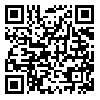BibTeX | RIS | EndNote | Medlars | ProCite | Reference Manager | RefWorks
Send citation to:
URL: http://vacres.pasteur.ac.ir/article-1-95-en.html
Introduction: During the production process of vaccines against viral diseases, virus inactivation plays a crucial role. β-Propiolactone (BPL) is a compound that is frequently used for inactivation of viruses and production of the vaccines against viral diseases such as rabies. In this study, the effects of concentration of BPL as well as the duration and temperature of incubation with BPL on the infectivity of the rabies virus was investigated. Methods: Fixed rabies (Pasteur Virus) PV strain grown on BHK21C13 cell was treated with 1:3000, 1:4000 and 1:5000 final concentrations of BPL at 4°C, 21°C and 37°C and their effects were evaluated after 24, 48, 72 h and 5 days. Each sample was titrated after various intervals and tested for the viral infectivity in BSR cells. The BSR cells were infected by triple serial dilutions of the rabies virus PV strain, and then infectivity was detected by the fluorescent technique. Results: Entire loss of infectivity of the virus treated at 4°C with 1:3000 and 1:4000 of BPL was evident at the end of the 24 and 48 h incubation periods, respectively. Moreover, the loss of infectivity of the virus treated with all tested concentrations of BPL was evident at the end of the 72 h at 21°C and 4°C. Conclusion: These findings suggest that aside from BPL concentration, temperature plays the most important role on BPL inactivation. The inactivation effect could be observed at the end of 72 h incubation period; however, the best economic condition for rabies virus inactivation was shown to be 1:4000 at 4°C for 48 h.
Received: 2017/05/27
| Rights and permissions | |
 |
This work is licensed under a Creative Commons Attribution-NonCommercial 4.0 International License. |

This work is licensed under a Creative Commons Attribution-NonCommercial-NoDerivatives 4.0 International License.





